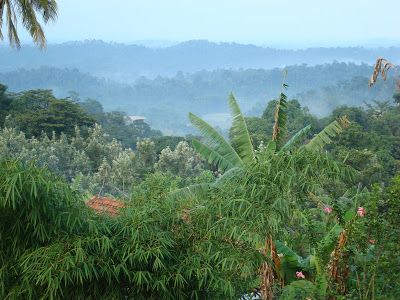
It was the lunch hour and we were the only ones around . We heard stories and folk lore about how Coorg got its name. The river Cauvery originates here at Talacauvery and is worshipped by the locals and hence the name “Kodava “ which means blessed by mother Cauvery. Kod means give and avva refers to mother Cauvery ,my guide explains to us , so the Kodavas call themselves children of Cauvery. In the Kaveri Purana, it is called the Matsyadesa .The story goes that Chandravarma , the youngest son of king Siddhartha of Matsya Dynasty came on pilgrimage to Talacauvery . He settled down here and the coronation of his eldest son took place in Balamuri with the blessings of the river. It is also called Krodadesa, perhaps referring to the warrior clan who settled down here
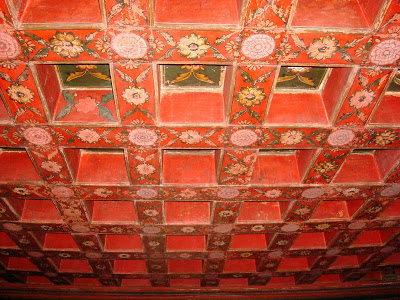
There are several myths surrounding the origin of the Kodavas themselves, the most popular being that they are descendants of Greeks who settled down here after the conquest of India by Alexander ,the great .However the Kodavas have retained their original customs even though they have merged with the larger milieu . They worship Karana (ancestors) as family deity, Cauvery as mother and Iguthappa as presiding deity.While they pray in Hindu temples, they revere Ainmane or the ancestors house as the place of worship.
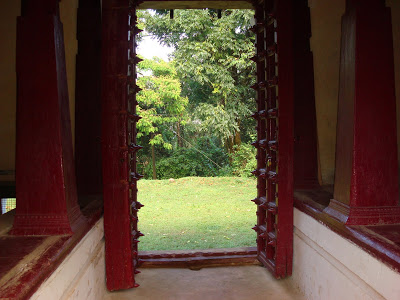
I asked Kailash if he believed that he was a Greek descendant and he laughed it off saying that some Kodavas believe that they are descendants of “Kurgs” and hence called so..Our luncheon session was filled with little snippets of Coorg lifestyle as we planned our itinerary . Kailash gave us insights into some hidden temples in the forests and estates , which are worshipped by the Kodavas and Hindus alike.
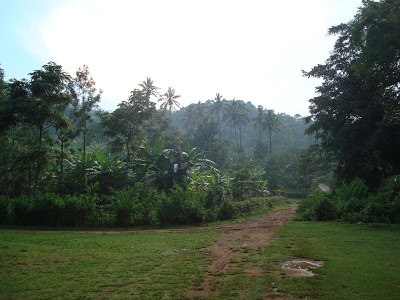
As the drizzle continued, we walked up to 18th century Nalknad Aramane (palace) built by the haleri king Dodda Veera Rajendra in the 18th century . Its in a small hamlet called Yavakapindi where a givernment school stood adjacent to it. A beautiful two storey structure painted in red with a tiled roof, beautiful wall paintings and pillars gazed at us as we opened the portals of the palace. A small mandapa in white was located close by.
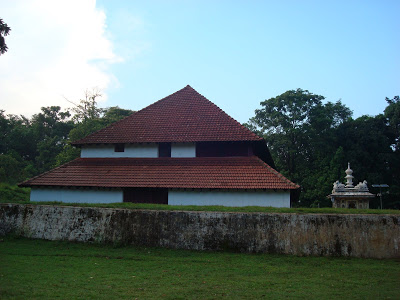
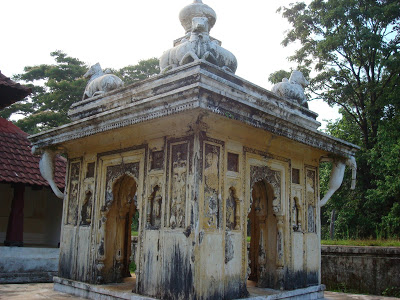
A drizzle started as we heard a sound behind us. A caretaker had silently moved in and was opening the main door for us. We were the only visitors. As we soaked in the moment, we were given a capsule of history .
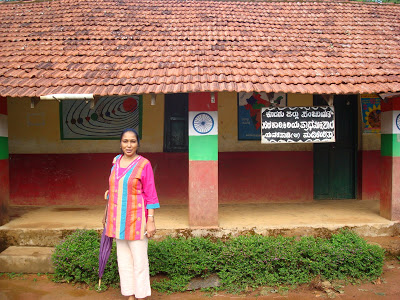

During one of the wars with Tipu Sultan, Dodda Veerarajendra had to retreat and he came to this dense forest. He converted it as an operation base and built a palace and even got married here . This palace was the last refuge of the last king of Chikkaveerarajendra before he was deposed by the British .
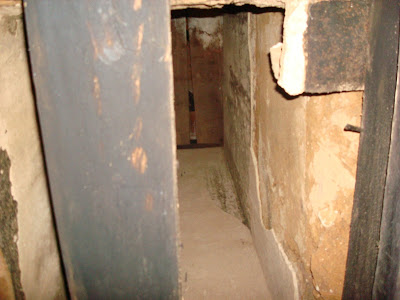
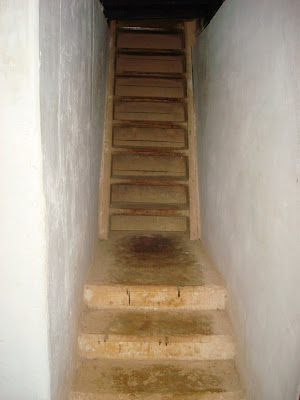
The caretaker showed us around as we climbed a small ladder , saw the hidden chamber in the roof , the torture room, the royal bedrooms and the main durbar . Some of the paintings here are original, while some have been renovated . This is the base camp for trekkers who wish to hike up to the highest peak Thadiyandamole .

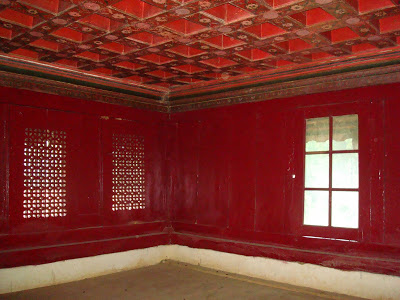
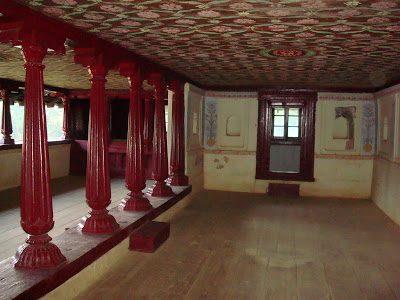
A few homestays are located close by and they offer brilliant views of the mountains. We walked up to Palace Estate where the owners had converted the granaries into rooms. The century old bungalow looked so comfortable that we wished that we could stay here .We are more of the home stay types as they give an insight into local culture and as the touristy crowds normally prefer resorts, we would like to stay in simple and quiet homestays.
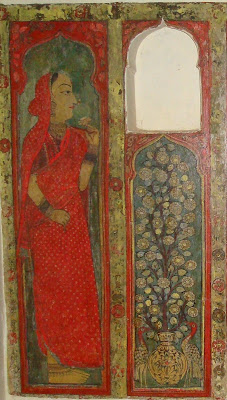
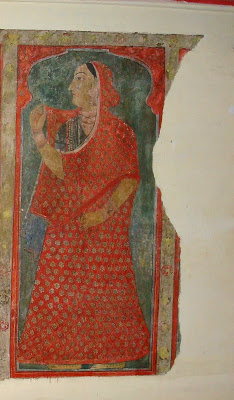
We met Prasad who was kind enough to show us around and also give us some more insights into the Kodavas. He said that about a 100000 Kodavas today live in the district and they revere their ancestors at Ainmane or their ancestral home. Each Kodava family has its Ainmane and we even went to their ancestral home later in the evening , but it was closed. The rituals of the Kodavas are very different from the Hindus , for instance agni or fire god is not so significant, while water is worshipped . Similarly priests and slokas have little significance as most marriages are conducted in the presence of the elders .
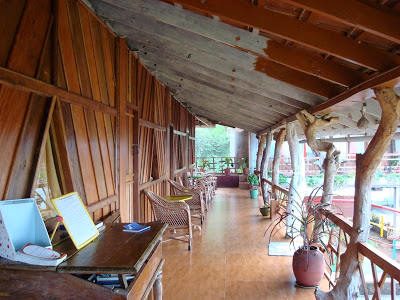
It was quite dark as we left the palace and we returned to the resort and heard Kailash describing some of their marriage traditions. The bride and the bridegrooms are apparently subjected to a lot of “tests “..for instance he claims that the bride has to carry a pot over her head while she is distracted by family and friends..sometimes she has to hold the pot for hours and she cannot keep it down till the relatives agree to do so for they are testing her patience. As for the groom, his test of strength is to chop down branches of trees in just one stroke.Almost all Kodavas are into agriculture and even if they are employed , they have a few acres of plantations .
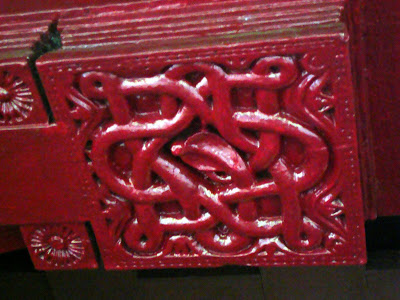
We sat for a few minutes outside under the clear sky, enjoying the last few moments of the dying blaze that was warming us up..Day two would see us discovering more of the heritage and spiritual essence of Coorg.

I could give my own opinion with your topic that is not boring for me.
good info.. 🙂 nice to read through..
lovely pics. 🙂
Hi,
Lakshmi,
Here is my email.
[email protected]
Thanks!
Lakshmi, the pictures and intriguing history make this a lovely read. The Western Ghats are fascinating, with its bits of local history and varying architecture. So Coorg is not just touristy afterall, there is lots to see and I think you will show us mure places 🙂
It sounds like you’re having a good time. It must be really cool to learn about all these things! And you saw the torture room…lol.
What a rare treat to have somewhere so fascinating and beautiful all to yourselves!
a wonderful entry, dear lady…this and the previous…very calming too
Lakshmi…I find your journey into unknown to me parts of the world fascinating and all quite so different than anything I am accustomed to. Beautiful and enchanting places all…interesting about the Greek influence on the area…
Lakshmi,
Thanks for the describing the palace and surrounding so well. I felt I was walking with you through the rooms and the corridors with you. Also never knew about the marriage custom – Im sure i would have failed in any attempt! :). Next time I’m there I’ll be sure to check the homestays
you have kept the interest on..yes i should visit someday..will need your tips,
A country as diverse as ours has so many amazing surprises,one feels humbled
keep it up &looking forward to the next one
tc
cu
Do I visit again, I think I missed out so many details.
hi there..that was so magical capture of your lens…
some historians believed Aryans were descendant of Greeks!!!
now you made me think again
I love sudden ( no preparation trips…) and it seems yours turned out to be amazing…the lush greens.
Loved those paintings -did you notice that they had the “Bani Thani” look…!
I agree homestay would have been great.
Look forward to more….
tk care ~
Wow! The first one was picturesque shot. The information is too good esp. knowing Veerarajendra and his palace. The tradition was very different and what the brides do so. Looking forward… 🙂
You post took me back to Tadiyandmol trip…The palace there, its lovely. You should have planned a trekk up the mountain, its the tallest in Coorg.
greta photos and a good read. Where is coorg in northern India?
Lakshmi-
beautiful write up with pictures, we visited TalaCauvery, it has a religious significance attached.
Pallavi – Thanks..Im always wary about writing historic information as it tends to become didactic 🙂
Gopal – Thanks..Coorg is very beautiful. I hope my photographs have done enough justice to Coorg
Ceedy – I will mail you by next stories .Thanks for sharing
Priyank – The western ghats are indeed very interesting and all the regions have different stories to tell..I realized that Coorg is hardly touristy ..there is so much to see and hear 🙂
Maria – The hidden chamber was far more interesting than the torture room
Wendy -Most of the places in Coorg are like that..you can have the place to yourself
Mark – Thank you. A lot of people head to Coorg to soothe their fraying nerves
DeeDee -Thank you for being part of the journey. I am glad you found the places interesting..Ive realized that each place has its own tale and its exciting to be a part of the history
Anu -Tell me about it..I would have dropped the pot instantly 🙂
CU – Every time I visit a place, I feel so humbled with the history behind it..an obscure place has once been a magnificent palace..isnt that amazing ? I will be glad to help you out anytime..do feel free to ask
Indrani – I always feel like that after I visit a place 🙂
Sayani – Thats the best part about myths and legends…they make you think and wonder 🙂
BTR – Home stays are ideal as they pack so much of local culture which most resorts do not focus on ..I like the paintings too..and they are said to be original 🙂
Jeevan – Thanks..It all seems so fascinating and Im glad you liked it
Mitr -Im glad you liked it..yes, talacauvery is a wonderful place and I will describe it in my next posts
Lakshmi
Ajeya – I know..i know..I have a weak knee and a bad back..strengthening those and soon I hope to trek 🙂
Matt – Coorg is in South India, in the western ghats, in a state called Karnataka. Its about 3 hours by road from Mysore (130 kms)and 6 hours from Bangalore,(250 kms) the capital city of Karnataka state. There are no trains to Coorg .The Britishers brought coffee to Coorg in the 17th-18th century and most estates are still around..some converted to homestays 🙂
lakshmi
Lakshmi
There is another theory that the ancestors of Coorgis came from Mohenjodaro. It is believed that their good looking features, fair colour, method of dressing, the custom of ancestor worshipping etc find similarity with the people of the ancient civilization of Mohenjodaro.
Coorgis are perhaps the only race who are/were permitted to possess guns without license. Coorgis worship guns, and there is a festival dedicated to that.
nice pics!!!..grt plc!!!
fascinating the stories you have narrated here. greek descendents huh? no wonder those coorgie women are spoken of for the beauty 🙂
i love india, and you inspire me to see more of it!
Descendents from the Greek? That’s interesting! Shouldn’t be surprising though, since during the 15th and the 16 centuries many Europeans were drawn to the South of India due to the lucrative spice trails. Thank you for the incredible pictures and story!
That was a beautiful post & the pictures are lovely. .
After reading this I am booking my tickets to bangalore in Aug because of Aug 15th is a Friday and going off to coorg.Is Aug a good month to visit Coorg in terms of weather?I also add that you have an amazing attention to detail.Keep writing coz we all will keep reading:-)
Hey
that was awesome.. the pics and text weave a wonderful experience for those like me who’ve not been to Coorg… looking fwd to reading more about this place..
[infact recently a friend couple of mine went to Coorg, stayed at some resort, cos they booked last min n he was cribbing abt how home stays are so much more fun n next trip shd be planned] 🙂
Celine – True..the Greek myth originates from the fact that they are believed to be Aryans and hence a link to the Indus valley civilisation . the weapons festival is in Sep ..Not just guns, but daggers and swords as well ..Thanks for sharing the information with us
SS, Vishnu – Thanks..you shd go there ..
Shantanu – Thanks..The Greek myth originates to the time when Alexander’s men settled here ..The story goes that it is believed that they are Aryans and hence one thought is that when Alexander invaded India, his men settled in the north and slowly migrated down south and married the locals ..more such myths though ..
Saurav – Thanks..It will be raining in August , but still its a great place to go ..
Aaarti- Thanks..thats the problem with season time..there are supposedly 900 homestays in Coorg and you still dont get accomodation ..
Nice blog, congratulations ! 😉